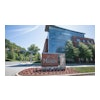For former University of New Mexico Regent Sandra Begay-Campbell, moving from the sunny Southwest to frigid Grand Rapids, Mich. to pursue a college degree was not just shocking to her physically, but emotionally, too. “I stuck out like a sore thumb,” she says in front of a crowd of graduate students, professors and administrators at the National Conference on Race & Ethnicity in American Higher Education held in May of this year in New York. She lasted only one semester and returned to her hometown community college, which suited her better and paved the way for her to transfer to the University of New Mexico’s main campus to earn a degree in civil engineering.
“My academic and culture-shock struggles have given me empathy for other rural Native American students,” says Begay-Campbell.
Now, as the creator of an internship program at the Department of Energy’s Sandia National Laboratories in Albuquerque that trains undergraduate and graduate students on how to develop renewable energy resources on tribal lands, Begay-Campbell brings this personal understanding to the job since she also serves as the a leader, supervisor, and mentor of the initiative’s ever-growing pack.
Chelsea Chee, a Navajo dual-degree master’s candidate in public administration and community planning, says working with American Indian engineers, environmental scientists and urban planners in the program has given her a different kind of support in the professional setting. “It’s a different kind of comfort level, but it’s quite challenging at the same time,” she says. “Things are a little more known. You don’t really have to explain where you’re coming from — in terms of not just gender, but our heritage,” she says.
Only about one in 13,000 engineers in the United States is an American Indian female, says Begay-Campbell, highlighting the critical need to create a support system and pipeline in STEM.


















